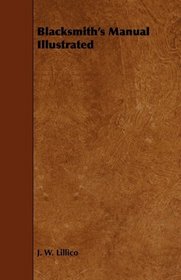Search -
Blacksmith's Manual Illustrated
Blacksmith's Manual Illustrated
Author:
INTRODUCTORY IN compiling this book on Blacksmith work, I have in mind the many little difficulties which arise from time to time in this class of work. In my own experience, and also in that of my fellow workmen, problems both of time saving and labour saving have had to be solved, and the tricks of the trade and wrinkles which have been learne... more »
Author:
INTRODUCTORY IN compiling this book on Blacksmith work, I have in mind the many little difficulties which arise from time to time in this class of work. In my own experience, and also in that of my fellow workmen, problems both of time saving and labour saving have had to be solved, and the tricks of the trade and wrinkles which have been learne... more »
ISBN-13: 9781443772785
ISBN-10: 144377278X
Publication Date: 10/27/2008
Pages: 224
Rating: ?
ISBN-10: 144377278X
Publication Date: 10/27/2008
Pages: 224
Rating: ?
0 stars, based on 0 rating
Publisher: Rimbault Press
Book Type: Paperback
Other Versions: Hardcover
Members Wishing: 2
Reviews: Amazon | Write a Review
Book Type: Paperback
Other Versions: Hardcover
Members Wishing: 2
Reviews: Amazon | Write a Review




